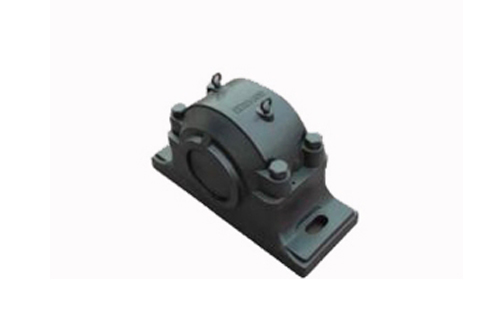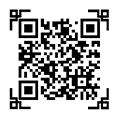Bearing adapter sleeve manufacturer: Under what conditions will the bearing seat be worn?
1. Crack defect
Some notches have cracks.
Cause: The impact load of the main machine is too large, and the mutual interference between the main shaft and the bearing seat is large; There is also a large amount of detachment friction causing cracks; Poor accuracy during installation; Incorrect operation (using a copper hammer, jamming large foreign objects) and friction cracks.
Solution: Use standards should be checked, appropriate interference and inspection materials should be provided, installation and operation methods should be improved, and lubricant for the air compressor should be inspected to prevent friction cracks.
2. Surface metal detachment of raceway
The operating surface is disengaged. After detachment, it is obviously concave and convex.
Cause: The rotating body of the bearing block and the inner and outer raceway surfaces both bear the effect of periodic pulsating loads, resulting in periodically changing contact stresses. When the stress cycle frequency reaches a certain standard value, fatigue and detachment will occur on the surface of the rotating body or the inner and outer raceways during operation. Once the load on the bearing seat is too large, this fatigue will be aggravated. In addition, the installation of the bearing pedestal is skewed and the shaft is bent, which can also cause the separation of the raceway.
Solution: The use standards and selection of bearing seats and clearances should be studied again, and the machining accuracy, installation methods, lubricants, and lubrication methods of the shaft and bearing housing should be checked.
Air Compressor Parts
3. Rust corrosion
Some or all of the surface layer is rusted, and the rotating body becomes linear and rusted.
Cause: Poor storage, poor packaging, insufficient rust inhibitor, ingress of water, acid, solvent, etc., immediately handle the bearing block. The entry of water, corrosive chemicals (paint, liquefied gas, etc.). Lubricant is not suitable. Considering the solidification of water vapor, water droplets are attached. Turn off when high temperature and humidity persist. Poor rust prevention during transportation.
Solution: To prevent rusting during storage, carry out greasing and packaging again on a regular basis, strengthen sealing characteristics, regularly maintain lubricating oil, timely replace unqualified or deteriorated oil, and properly use bearing blocks.

4. Broken cage
Bolts are loose or cracked, and the rotating body is broken.
Cause: Excessive torque load, insufficient lubrication, frequent changes in rotational speed, large vibration, and installation of the bearing pedestal with inclination, causing foreign objects to be stuck.
Solution: It is necessary to search whether the use standards and lubrication conditions are suitable, pay attention to the use of bearing blocks, study whether the selection of cages is suitable, and whether the rigidity of the bearing block box specifies the load capacity.
5. Creep
The inner diameter surface or outer diameter surface deviates, causing mirror surface or discoloration, and sometimes getting stuck.
Causes: insufficient interference through mutual cooperation, insufficient tightening of sleeve specifications, abnormal temperature rise, excessive load on the main engine, etc.
Solution: It is necessary to study again whether the interference amount is suitable, check the use standards, and check the accuracy of the shaft and bearing housing.
6. Burns
The bearing seat becomes hot and discolored, resulting in burns and cannot be rotated.
Cause: Generally, it is due to insufficient lubrication, unqualified or deteriorated lubricating oil quality, and tight installation of bearing seat. In addition, the clearance is too small and the load is too large (large preload), resulting in deflection of the roller bearing.
Solution: Select an appropriate clearance (or expand the clearance), check the type of lubricant, ensure the introduction amount, check the use standard, prevent the cause of deviation in accurate positioning, and improve the assembly method of the bearing seat.
7. Bearing seat indentation
Damage: Dents on the raceway surface or rotating surface caused by biting into small metal powders, foreign objects, etc. Considering the impact during installation, a spherical surface (tensile strength indentation) is generated on the spacing of the rotating body.
Cause: Foreign matters such as metal powder bite in. Excessive impact loads during assembly or transportation.
Solution: Impact the coupling. Improve sealing equipment. Filter the lubricating oil. Lifting assembly and operation methods.
8. Bearing seat worn out
Damage: To be clear, wear refers to the wear of the raceway surface or the rotating surface, the inner bore of the roller bearing, the shaft ring surface, and the spherical surface of the cage due to friction.
Cause: Foreign matter entering; Development caused by rust and electrical corrosion; Poor lubrication; Taking into account the deviation caused by the irregular movement of the rotating body.
Solution: Improve sealing equipment; Clean the bearing housing; Adequate filtered lubricating oil; Check the lubricant and lubrication method.
9. Bearing seat discoloration
Damage: Due to temperature rise and lubricant reaction, the raceway wheel, rotating body, and cage are discolored.
Cause: Poor lubrication. The presence of lubricants leads to hot oil immersion. The temperature rises sharply.
Solution: Improve the lubrication method and replace the lubricating oil of the air compressor.
10. Bearing seat burns
Damage: The raceway wheel, rotating body, and its holder are significantly scalded during rotation until discoloration, softening, deposition, and damage occur.
Cause: Poor lubrication. Excessive load (excessive preload). The rotational speed is too high. The clearance is too small. The entry of water and foreign matter. The accuracy of the shaft and bearing housing is poor, and the deflection value of the shaft is large.
Solution: Research lubricants and lubrication methods. Correct the selection of bearing blocks. Study mutual fit, bearing seat clearance, and preloading. Improve sealing equipment. Check the accuracy of the shaft and bearing housing. Lift the installation method.
11. Hidden Brinell indentation on bearing seat
Damage: During the micro vibration period, the contact between the rotating body and the raceway wheel has developed to a certain extent due to vibration and shaking, resulting in scratches that resemble Brinell indentation.
Cause: During transportation, the bearing pedestal vibrates and shakes during rotation and shutdown. A small shaking motion. Poor lubrication.
Solution: During the transportation process, the shaft and bearing housing should be fixed. The inner hole and outer side shall be separately packaged during transportation. This, coupled with preloading, reduces vibration. Use a suitable lubricant.

 | Mobile:15061431555 13951550599 15366460599 |
 | Fax:0515-86621099 |
 | Tel:0515-86622862 |
 | Address:Zhi'er Road, Kaiyuan Industrial Park, Xiangshui Economic Development Zone |